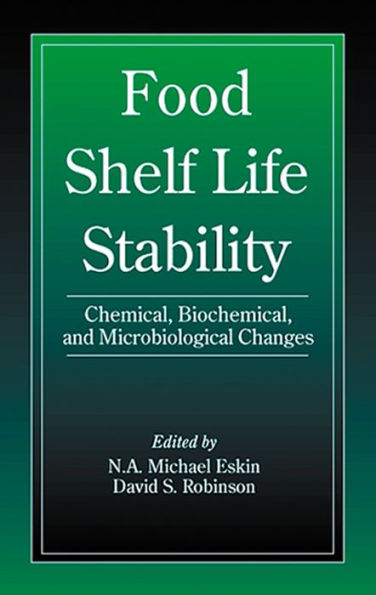Food Shelf Life Stability: Chemical, Biochemical, and Microbiological Changes
Food Shelf Life Stability provides a unique approach to understanding this critical subject by examining physical, chemical, and biochemical factors affecting food quality.
The first section emphasizes the effects that water activity, glass transition, and plasticization have on temperature, water content, and time-dependant phenomena affecting the shelf life of low and intermediate moisture foods.
The remaining chapters discuss how mechanical handling and temperature, irradiation, and packaging all influence shelf life. Section two, on chemical factors, examines the benefits of controlled atmosphere storage and modified atmosphere packaging on vegetables, fruits, grains, and oilseeds. The remaining chapters compare the effectiveness of antioxidants, emulsifiers, stabilizers, and sulfur dioxide to enhance food quality. The remaining chapter in this section deals with the application of biotechnology for improving shelf life. Intended for food science professionals as well as students, Food Shelf Life Stability presents the fundamental principles that are applied to maintaining a high food quality for an extended period of time.
1137002385
The first section emphasizes the effects that water activity, glass transition, and plasticization have on temperature, water content, and time-dependant phenomena affecting the shelf life of low and intermediate moisture foods.
The remaining chapters discuss how mechanical handling and temperature, irradiation, and packaging all influence shelf life. Section two, on chemical factors, examines the benefits of controlled atmosphere storage and modified atmosphere packaging on vegetables, fruits, grains, and oilseeds. The remaining chapters compare the effectiveness of antioxidants, emulsifiers, stabilizers, and sulfur dioxide to enhance food quality. The remaining chapter in this section deals with the application of biotechnology for improving shelf life. Intended for food science professionals as well as students, Food Shelf Life Stability presents the fundamental principles that are applied to maintaining a high food quality for an extended period of time.
Food Shelf Life Stability: Chemical, Biochemical, and Microbiological Changes
Food Shelf Life Stability provides a unique approach to understanding this critical subject by examining physical, chemical, and biochemical factors affecting food quality.
The first section emphasizes the effects that water activity, glass transition, and plasticization have on temperature, water content, and time-dependant phenomena affecting the shelf life of low and intermediate moisture foods.
The remaining chapters discuss how mechanical handling and temperature, irradiation, and packaging all influence shelf life. Section two, on chemical factors, examines the benefits of controlled atmosphere storage and modified atmosphere packaging on vegetables, fruits, grains, and oilseeds. The remaining chapters compare the effectiveness of antioxidants, emulsifiers, stabilizers, and sulfur dioxide to enhance food quality. The remaining chapter in this section deals with the application of biotechnology for improving shelf life. Intended for food science professionals as well as students, Food Shelf Life Stability presents the fundamental principles that are applied to maintaining a high food quality for an extended period of time.
The first section emphasizes the effects that water activity, glass transition, and plasticization have on temperature, water content, and time-dependant phenomena affecting the shelf life of low and intermediate moisture foods.
The remaining chapters discuss how mechanical handling and temperature, irradiation, and packaging all influence shelf life. Section two, on chemical factors, examines the benefits of controlled atmosphere storage and modified atmosphere packaging on vegetables, fruits, grains, and oilseeds. The remaining chapters compare the effectiveness of antioxidants, emulsifiers, stabilizers, and sulfur dioxide to enhance food quality. The remaining chapter in this section deals with the application of biotechnology for improving shelf life. Intended for food science professionals as well as students, Food Shelf Life Stability presents the fundamental principles that are applied to maintaining a high food quality for an extended period of time.
325.0
In Stock
5
1

Food Shelf Life Stability: Chemical, Biochemical, and Microbiological Changes
384
Food Shelf Life Stability: Chemical, Biochemical, and Microbiological Changes
384
325.0
In Stock

Product Details
| ISBN-13: | 9780849389764 |
|---|---|
| Publisher: | Taylor & Francis |
| Publication date: | 09/19/2000 |
| Series: | Contemporary Food Science |
| Pages: | 384 |
| Product dimensions: | 6.12(w) x 9.19(h) x (d) |
About the Author
From the B&N Reads Blog
